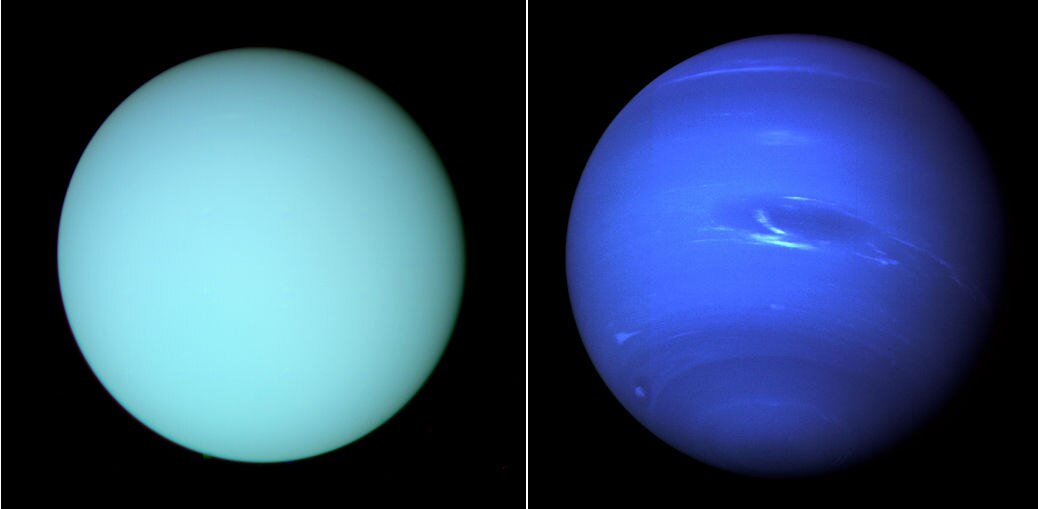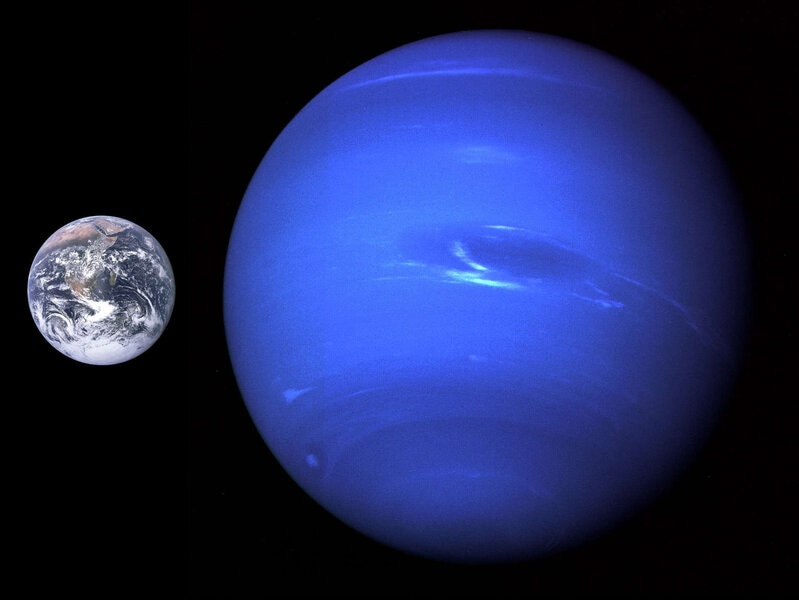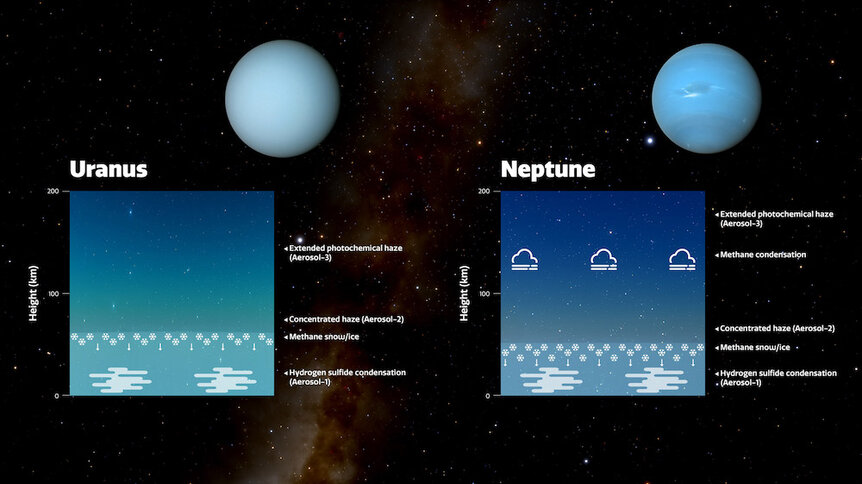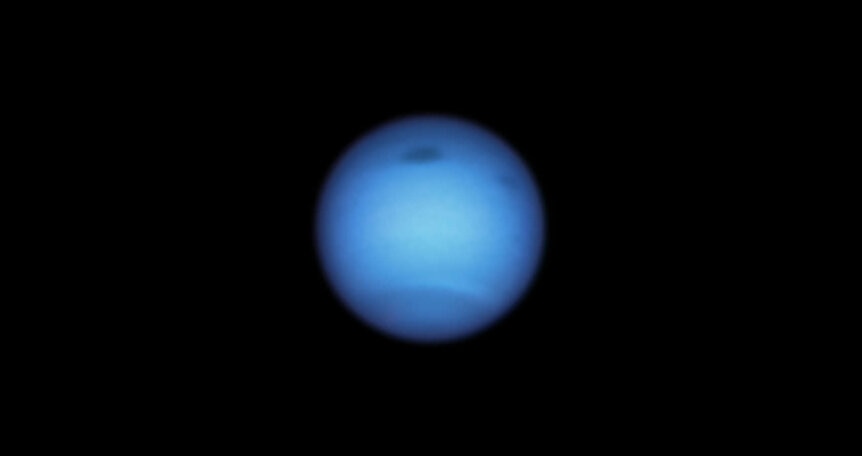Create a free profile to get unlimited access to exclusive videos, sweepstakes, and more!
A lack of wind keeps a dull haze layer around Uranus
Uranus is very similar to Neptune, but looks very different.

Why are Uranus and Neptune different colors?
They’re similar, but not exact. Neptune is a lovely, deep blue, while Uranus is a more muted, paler shade. I’ve seen both through a telescope and Neptune is strikingly blue, and Uranus is more greenish, like a dull teal.
The thing is, they’re both very similar. They have roughly the same mass — Neptune is 17 times Earth’s mass, Uranus about 15 — both are about four times Earth’s diameter, and they are both largely made of the same materials. And in fact, in very general terms their colors are sort of similar due to the presence of methane, which tends to absorb red light from the Sun and reflect the blue light back to space.
So why do they look so different? Besides the color, Neptune also shows lots of features like huge dark spots and lacy white clouds of frozen ammonia. Uranus is just kinda blank. What causes such a large contrast between such similar planets?
For the first time, astronomers have developed a single atmospheric model of the two worlds that shows what they should look like across a wide range of wavelengths, and it replicates observations very well [link to paper].
The big difference between the two? A blue haze all up in Uranus (if Hendrix fans will forgive me)... ‘scuse me while I explain its sky (again, sorry, I can’t help it).
We have a pretty good idea of the sorts of materials making up both planets, including hydrogen, helium, methane, ammonia, and the like. And we have complicated physics that explains how these behave in an atmosphere, even when the atmosphere is thousands of kilometers deep and there’s no real surface to speak of below it. Many of these models are fearfully complicated, and used to predict what would be seen at specific wavelengths.
What’s new here is the scientists developed a model of what such an atmosphere would look like across a broad range of wavelengths (think of them as colors), ranging from ultraviolet to infrared. By comparing the output of these models with actual observations across wavelengths using spectra of the two ice giants taken with the Gemini North telescope, the NASA Infrared Telescope Facility, Hubble Space Telescope, and even from the Voyager probes, they can then tweak the models to create suitable conditions to match the observations.
What they found is that there are three layers of aerosols — fine suspended particles — in the upper atmospheres of both planets. The bottom layer is deep in the atmosphere and made up of suspended hydrogen sulfide (yes, Uranus smells like rotten eggs) and a mix of chemicals produced in the upper atmosphere when it reacts with ultraviolet light from the Sun and creates new molecules. The middle layer also contains this photochemical haze, but is thin and mixed with methane ice, and at a height where atmospheric pressure runs from about the same as sea level on Earth to twice that pressure. The top layer is similar to the middle one but less dense and much more extended vertically; this is where the hazy aerosols are made.
The haze particles made in the upper layer settle down to the second one, where they act to help methane ice condense. The crystals grow so rapidly they “snow out,” falling to deeper levels. The methane then melts, and deposits the haze particles into the deepest layer.
And here’s where the two planets are different: Neptune has much stronger winds than Uranus. It actually has the strongest persistent winds of any planet, blowing at speeds in excess of 1,500 kilometers per hour! These winds are turbulent, and mix the methane efficiently into the middle haze layer. This causes more snow to fall, making the atmosphere clearer.
And that explains why they look so different! Neptune’s atmosphere is active and extremely windy, which makes the haze layer go away. Uranus has a more stolid atmosphere, with less wind to mix the methane, so the haze layer above it is thick. It blocks the features below, and by eye the planet looks washed out.
When they ran the numbers they also found that this is what explains the differences in color, too. That was a byproduct of the models and not the main goal, so it’s nice to see it agreeing with observations. Another happy result is that the haze particles falling deeper into Neptune’s atmosphere darken the lowest layer, which may explain the huge dark clouds seen on Neptune.
I’ll note that for Neptune, they had to add a fourth layer higher up of small methane ice particles to get it to match what’s seen in longer wavelengths in the infrared, where methane is good at absorbing light. I mention this because all of this is based on modeling — adjusting parameters in the equations processed by computers, like what molecules absorb what wavelengths at what pressures, the thickness of the layers, and more — and this can be a little ad hoc sometimes. In a sense you can be just twisting dials until you get an answer that matches observations, but that doesn’t mean it’s the right configuration of dials.
But in this case they can make predictions of what else should be seen, and that can come later with more observations.
And hey, with NASA talking seriously about sending new space missions to these giant keepers of the outer solar system, this kind of science can lay the ground work (or air work, I suppose) for the science the missions can do, which can be used to help design them. We don’t just send these probes to gather info willy-nilly, but instead have specific science goals for them, equipping them with the instruments that can best achieve those goals as well as take a more general census of the target worlds.
It’ll be a while before all that happens, though. For now, we’ll keep watching these planets as our Earth-based telescopes and cameras get better all the time. As do our models of how they behave.





























